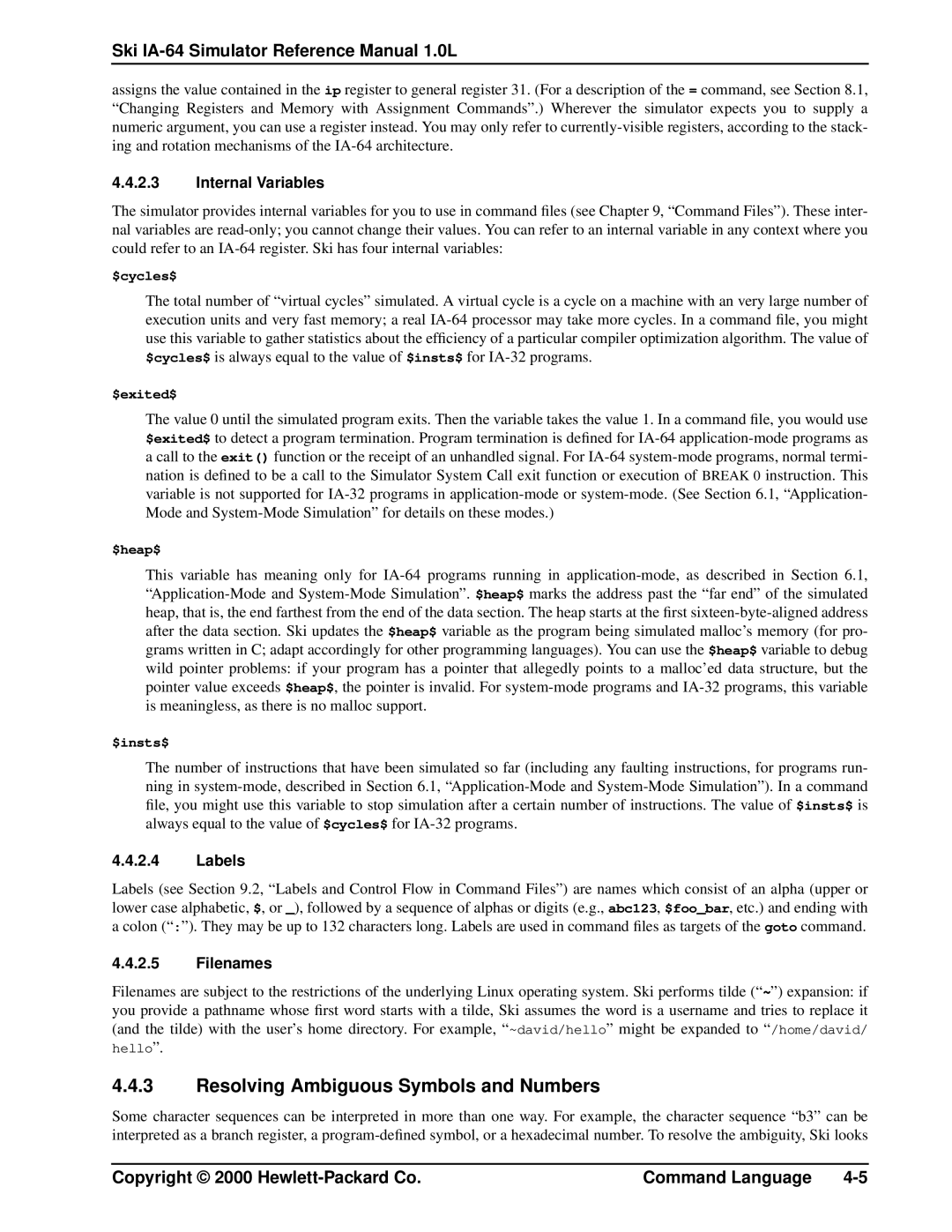
Ski IA-64 Simulator Reference Manual 1.0L
assigns the value contained in the ip register to general register 31. (For a description of the = command, see Section 8.1, “Changing Registers and Memory with Assignment Commands”.) Wherever the simulator expects you to supply a numeric argument, you can use a register instead. You may only refer to
4.4.2.3Internal Variables
The simulator provides internal variables for you to use in command files (see Chapter 9, “Command Files”). These inter- nal variables are
$cycles$
The total number of “virtual cycles” simulated. A virtual cycle is a cycle on a machine with an very large number of execution units and very fast memory; a real
$exited$
The value 0 until the simulated program exits. Then the variable takes the value 1. In a command file, you would use $exited$ to detect a program termination. Program termination is defined for
$heap$
This variable has meaning only for
$insts$
The number of instructions that have been simulated so far (including any faulting instructions, for programs run- ning in
4.4.2.4Labels
Labels (see Section 9.2, “Labels and Control Flow in Command Files”) are names which consist of an alpha (upper or lower case alphabetic, $, or _), followed by a sequence of alphas or digits (e.g., abc123, $foo_bar, etc.) and ending with a colon (“ :”). They may be up to 132 characters long. Labels are used in command files as targets of the goto command.
4.4.2.5Filenames
Filenames are subject to the restrictions of the underlying Linux operating system. Ski performs tilde (“ ~”) expansion: if you provide a pathname whose first word starts with a tilde, Ski assumes the word is a username and tries to replace it (and the tilde) with the user’s home directory. For example, “ ~david/hello” might be expanded to “ /home/david/ hello”.
4.4.3Resolving Ambiguous Symbols and Numbers
Some character sequences can be interpreted in more than one way. For example, the character sequence “b3” can be interpreted as a branch register, a
Copyright © 2000 | Command Language |
